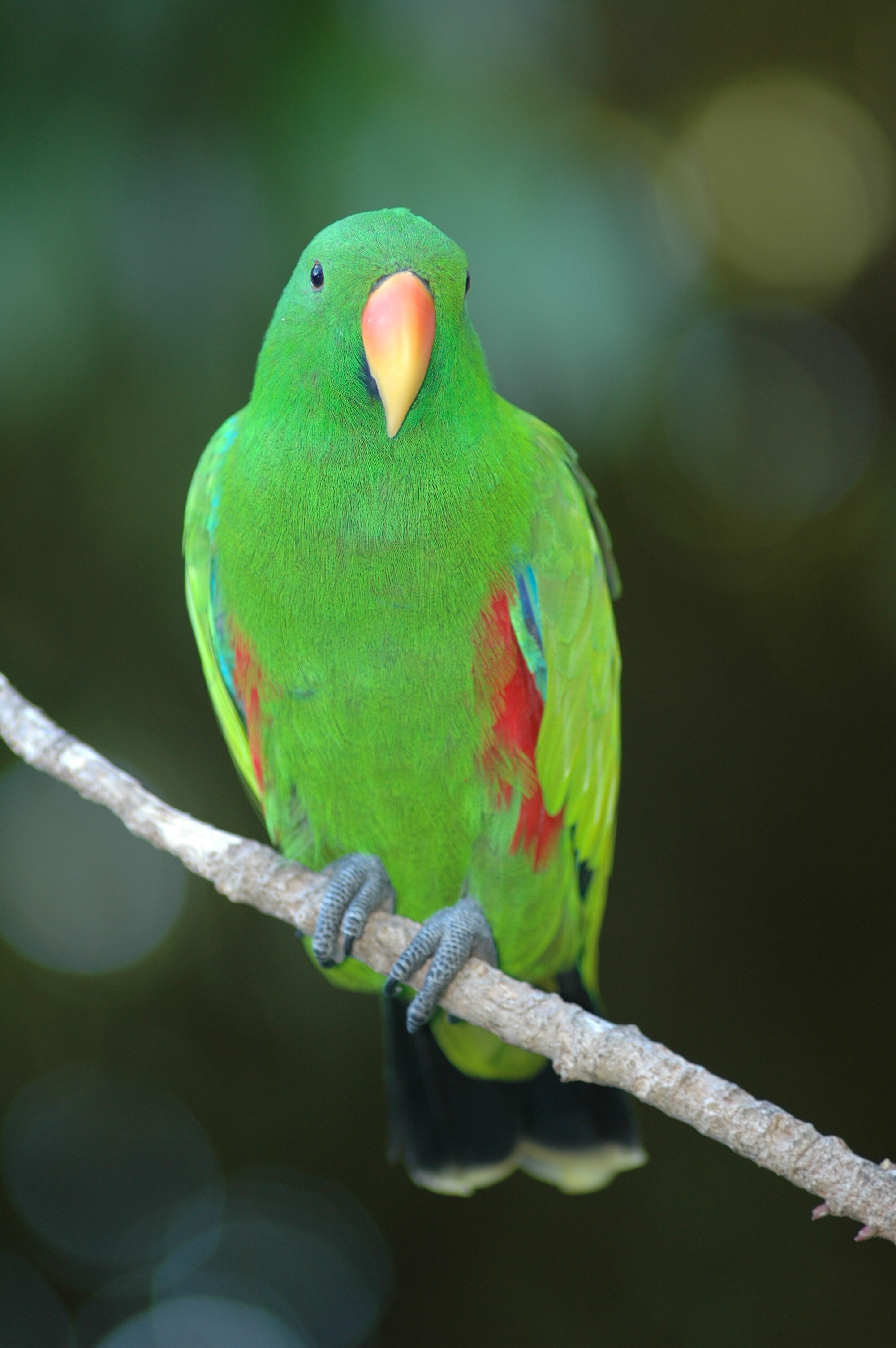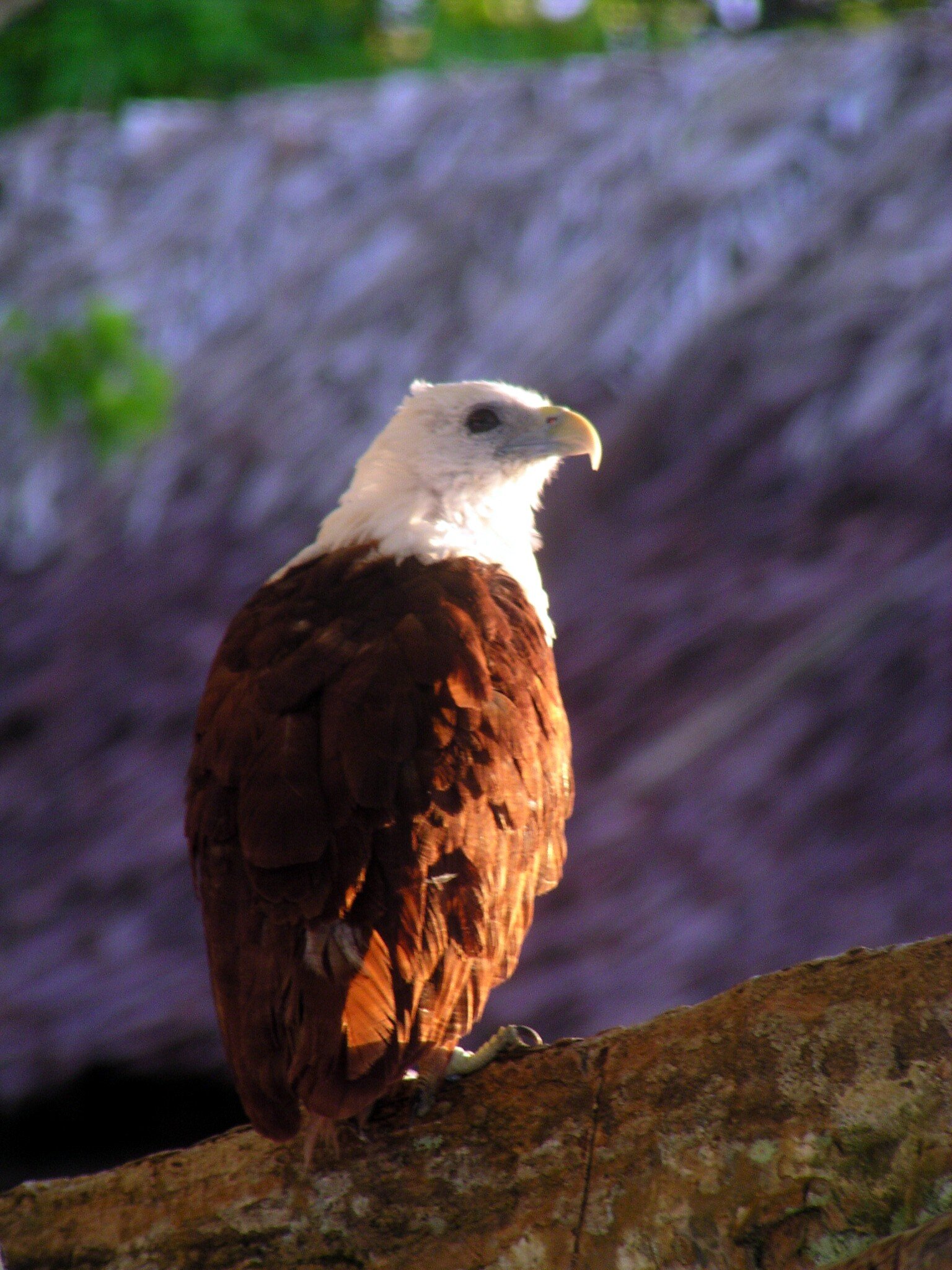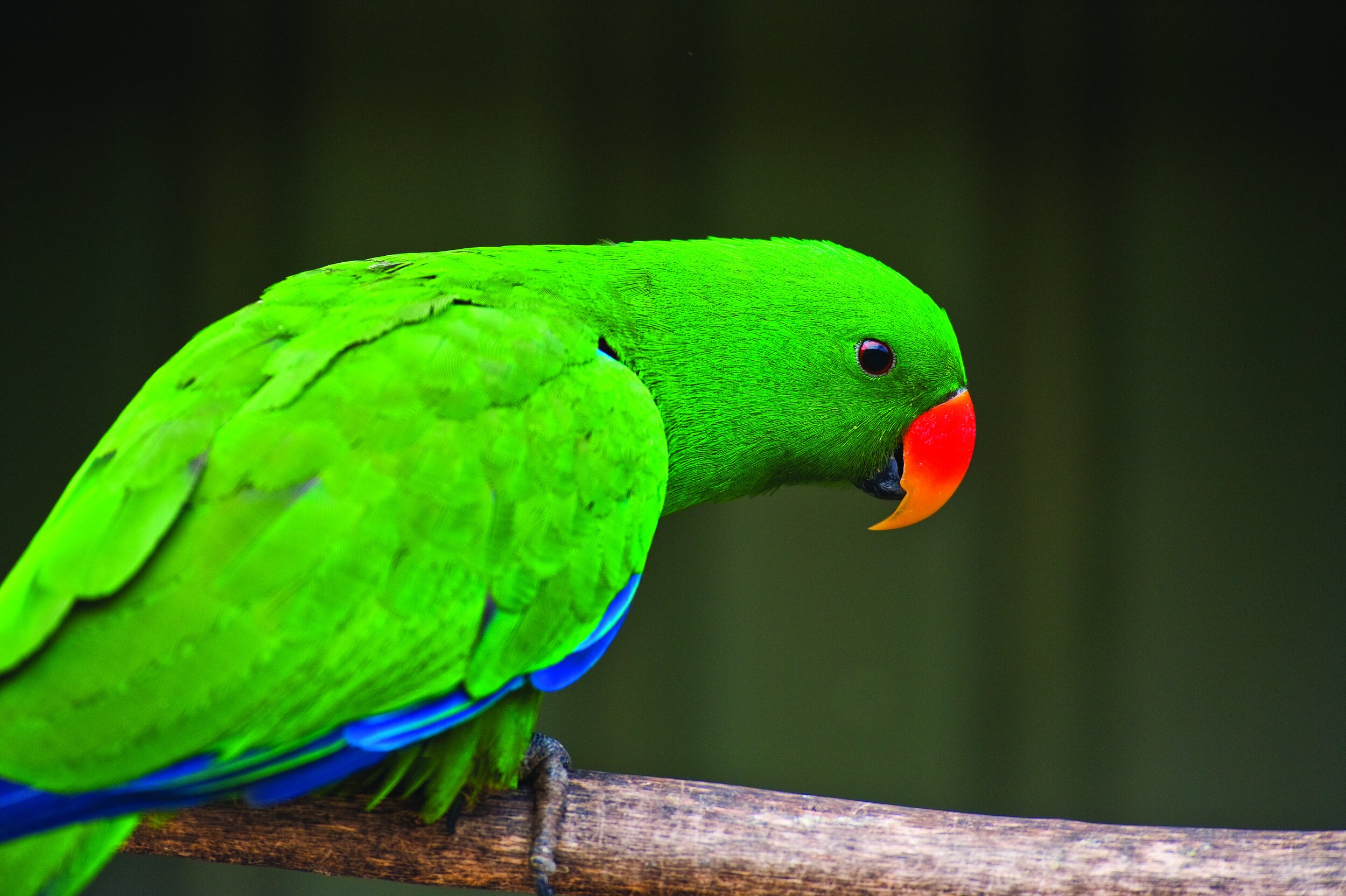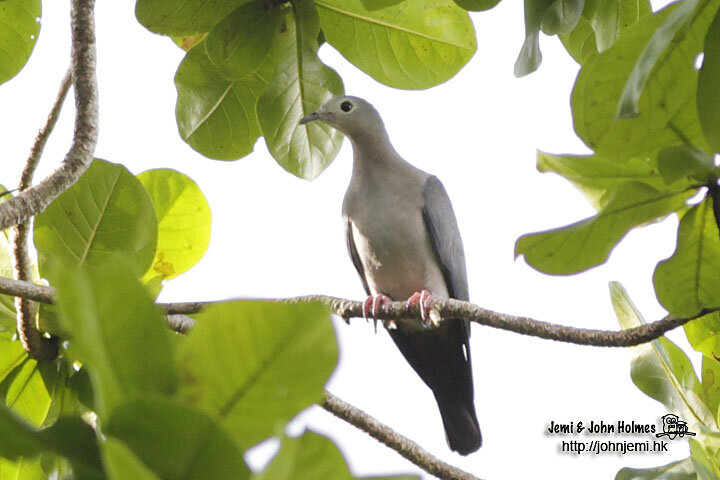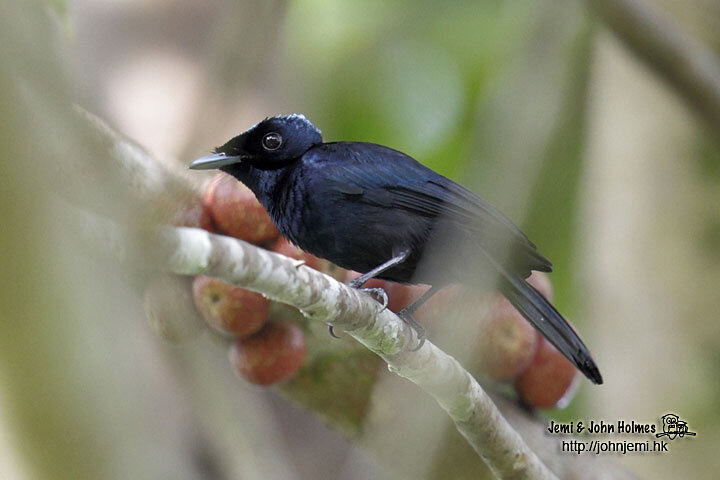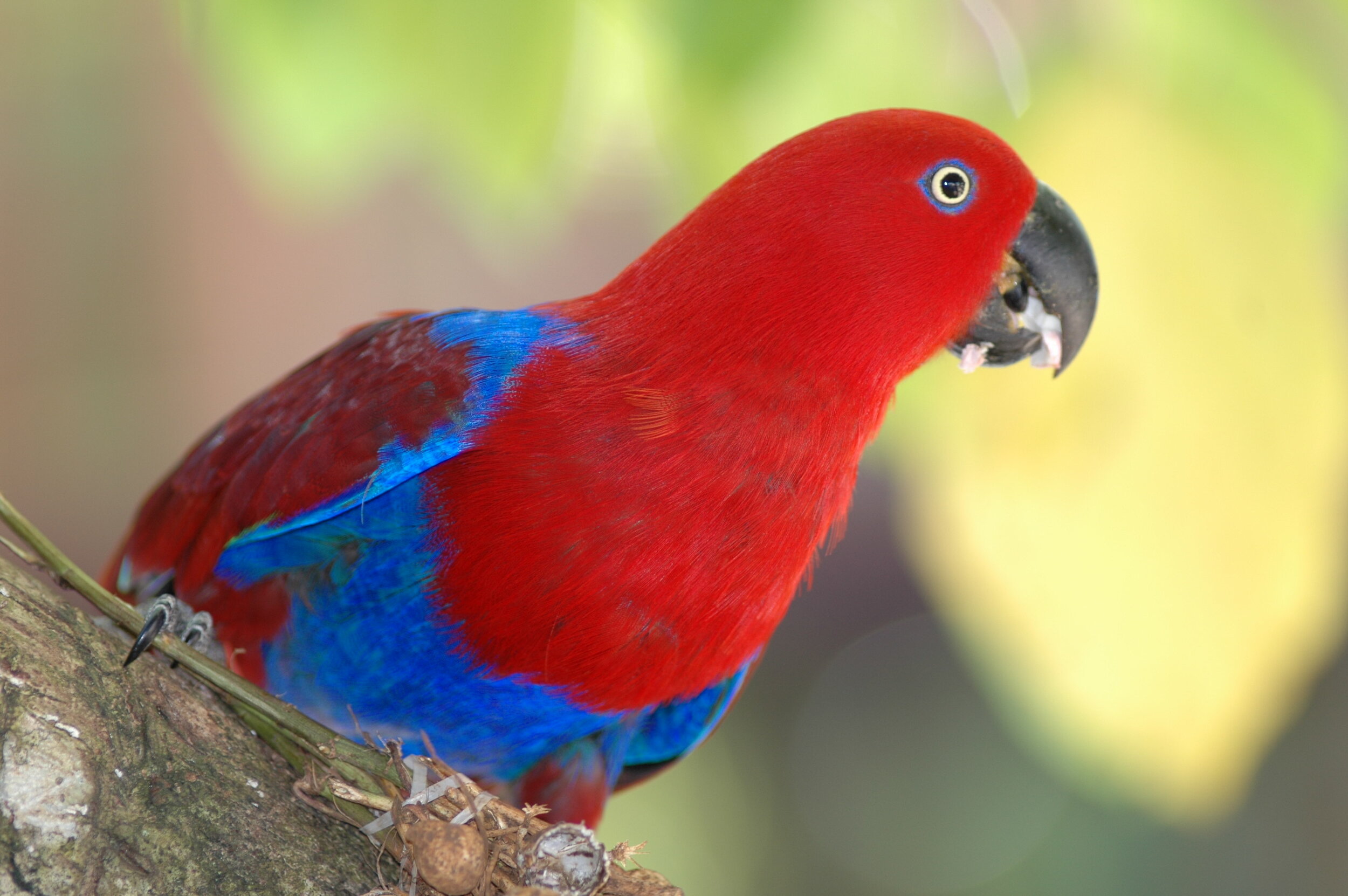
birdwatching
You don’t need to travel far out of town to find the incredible diversity of bird species here, but if you are a serious twitcher, you are in for a real treat amongst the rainforests, rivers, seas, highlands & lowlands throughout the incredible New Ireland Province.
birdwatching in new ireland
New Ireland Province holds eight endemics and shares a further fourteen with the island of New Britain
In the highlands of the Lelet Plateau, at an altitude of about 750m (2461ft) you can keep your eyes out for the uncommon New Ireland Myzomela in flowering trees, and the gorgeous but rather shy Paradise Drongo, or a White-naped Lory feeding in a flowering vine. Head out at night, armed with a powerful spotlight, to find the vocal New Ireland Boobook.
Fruiting trees hold an excellent selection of doves and pigeons, including Bismarck endemics like the spectacular Pied Cuckoo-Dove, Knob-billed Fruit Dove and Yellowish Imperial Pigeons
Grassy areas in the lowlands often hold the endemic New Ireland Mannikin, often accompanied by the Bismarck-endemic Buff-bellied Mannikin.
In the habitat surrounding Kavieng, you should encounter the endemic Hunstein’s Mannikin, Rufous-tailed Bush-hen, Finsch’s Pygmy Parrots, Bismarck Hanging-Parrot and the Common Kingfisher.
If you decide to head out to the islands, whilst at sea you will likely encounter Wedge-tailed Shearwater, Black-naped Tern, Sooty Terns and some Indo-Pacific Bottle-nosed Dolphins. On the outer islands you will find Red-footed Booby, Greater Frigatebird and Black Noddy. The elegant White-tailed Tropicbird, Brown Noddy and the dazzling White Tern nest in small numbers. Stop off at Tsoi Boto, near the Mansava Lodge for a nesting population of indigenous megapodes—chicken-like, incubator birds with small heads and large feet.
If you are strapped for time, a quick visit across the harbour from Kavieng to Nusa Island Retreat will afford you very close-up experiences with a few Blyth’s Hornbill, male and female Eclectus, Imperial Pigeons, Black-capped Lorikeets and Messina’s Lorikeets.
Visit the links below for organised tours for birding enthusiasts, or contact us if you would like logistic support to arrange your own small, private birding trip of New Ireland.
bismarck boobook (
Ninox variegata)
Endemic to the Bismarck archipelago, it occurs on the islands of New Britain, New Ireland and New Hanover, where it lives in forested lowlands, hills and mountains, up to an altitude of 1,000 m (3,300 ft)
paradise drongo (
Dicrurus megarhynchus)
The Paradise Drongo or Ribbon-tailed Drongo (Dicrurus megarhynchus) is endemic to New Ireland, and has pride of place on the New Ireland Flag.
Image: Greg B.Miles
finsch’s Pygmy Parrot (Micropsitta pusio)
Named after the German ethnographer, naturalist, and colonial explorer Friedrich Hermann Otto Finsch, these tiny little parrots are found on Lihir and Tabar Islands, New Hanover, mainland New Ireland, and in the Bismarck Archipelago.
Bismarck kingfisher (Ceyx websteri)
Endemic to the Bismarck Archipelago, its natural habitats are subtropical or tropical moist lowland forests, rivers, freshwater lakes, and freshwater marshes.







